Gifs. The principle of operation of various types of weapons (31 photos + 1 video)
A selection of the working mechanisms of firearms.
I think many have seen it, but not all at once.
Have fun watching!
1. 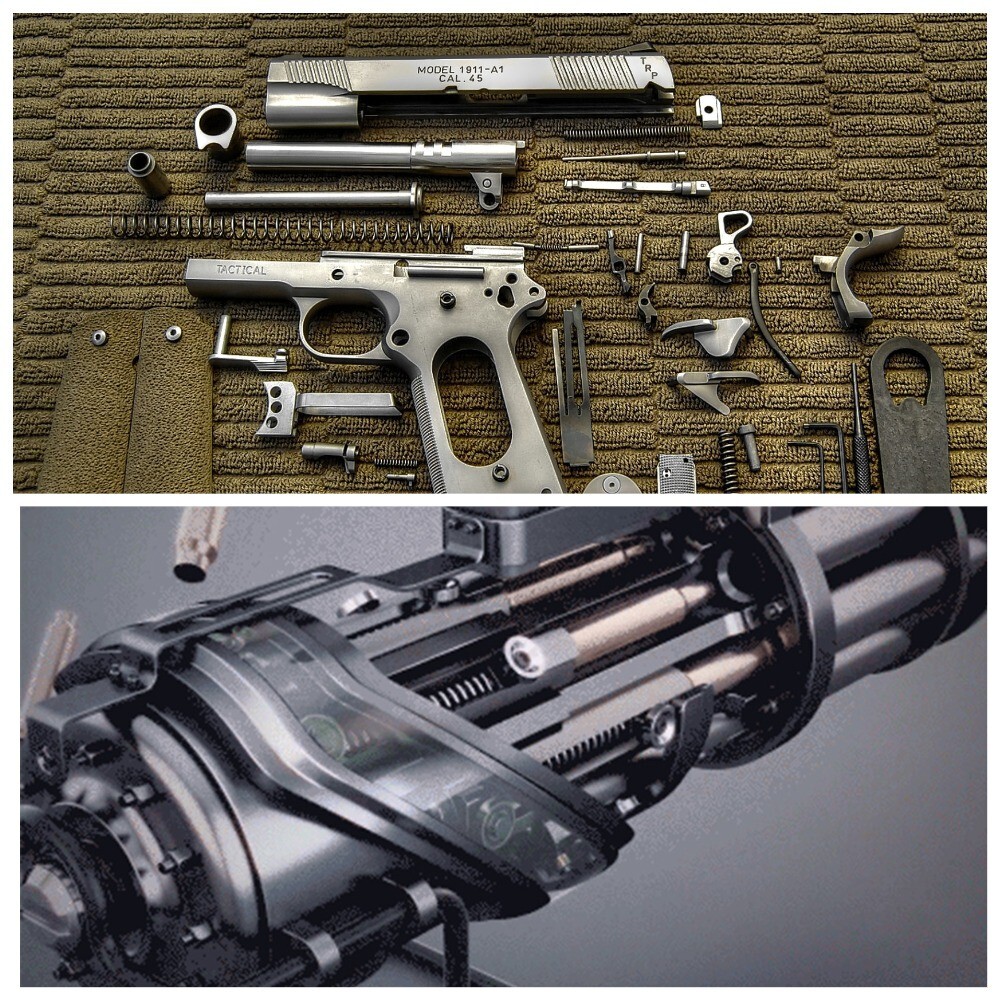
2.
Mechanism with side locking of the barrel bore. 
3.
"Minigun" Gatling system. 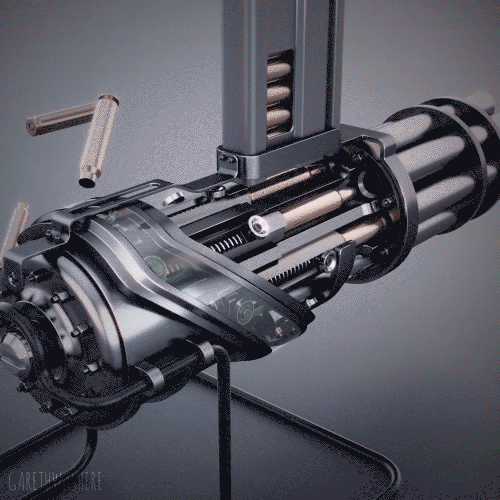
4.
This system is based on the idea of the Webley-Fosbery automatic revolver, which reloaded using recoil force. 
5.
A rifle fed from a rotary pack of cartridges. The idea was borrowed from rifles of the late 19th and early 20th centuries. 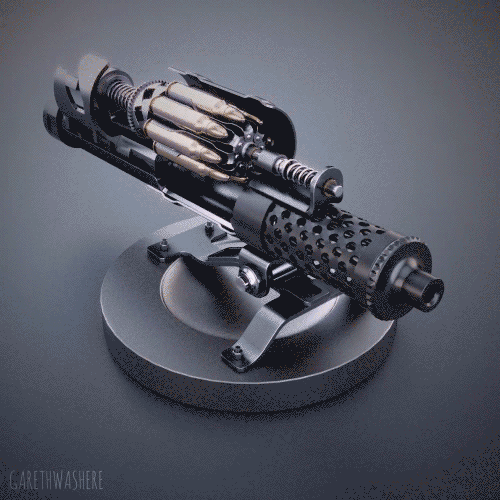
6.
Recoil of the barrel during its long stroke. The idea is based on several models. One of the most successful was the Browning Auto 5 shotgun. 
7.
Disc store. Before us is a modern Lewis system machine gun. 
8.
Hotchkiss revolver system. 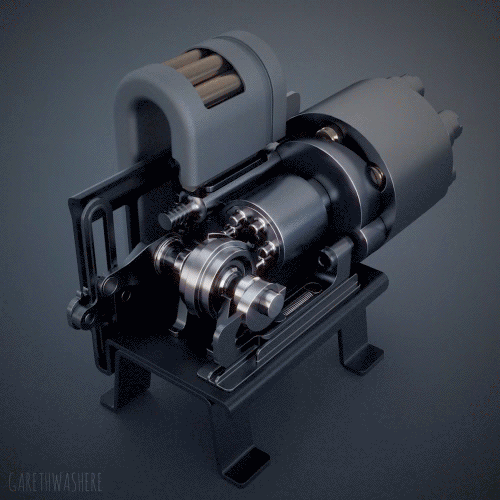
9.
Gardner system machine gun. 
The operating principle of this double-barreled machine gun is based on a mechanical trigger mechanism, which is driven by rotating the handle.
10.
Semi-free bolt with lever delay. This is roughly how the automation system of the French FAMAS machine gun works. 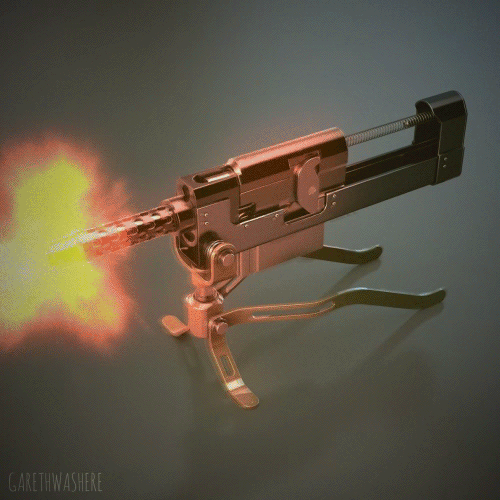
eleven.
Cam mechanism. Automatic revolver-type gun with a gas exhaust system. 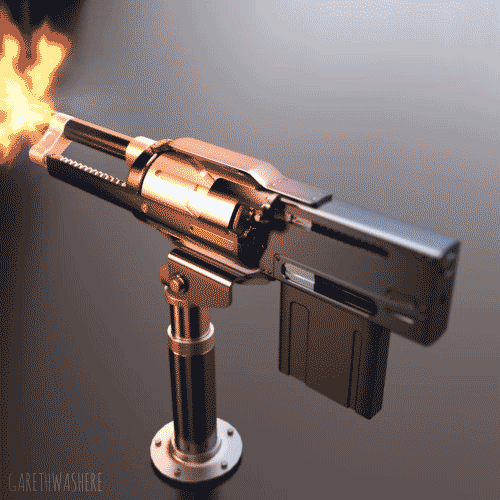
12.
Locking the barrel bore with a cranked pair of levers (crank-rod). Georg Luger Luger P08 pistol 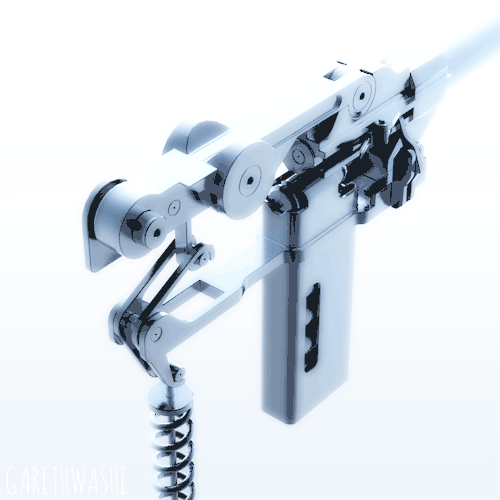
When using this locking principle, the bolt is fixed at the breech end of the barrel with a pair of articulated levers. The free end of one of the levers is hinged on the bolt, the other - on the stationary parts of the weapon. The levers are at a dead center, that is, the angle between their shoulders is close to 180 degrees, so that when the moving parts of the automation roll back, the levers do not fold to the side, but maintain this position until their articulation meets a special ledge on the stationary receiver . After this, the levers can fold and the bolt can move back on its own.
13.
Roller locking with automatic operation, working from the recoil of the barrel with a short stroke. F-42 rifle 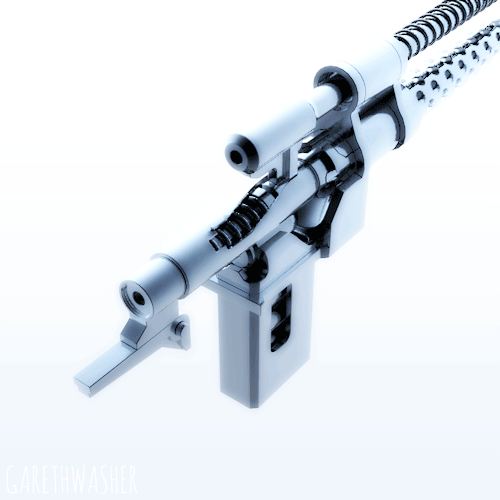
Used in the Fallschirmjagergewehr 42, a 1942 model paratrooper rifle. The FG-42 was developed specifically for Luftwaffe paratroopers. The impact mechanism is a trigger type, powered by a reciprocating and additional spring. The machine gun bolt consists of two parts: the combat cylinder, on which the bolt mirror and guides for the rollers are made, and the bolt stem, in the front of which there is a wedge. Between the bevels of the wedge and the combat cylinder there is a pair of rollers. When locked, the wedge moves the rollers apart, sliding them into grooves on the barrel coupling and fixing the combat cylinder at the breech. After the shot, the barrel moves back for some time in a locked state, after which the rollers are brought together by the inclined grooves of the receiver, simultaneously pushing the bolt stem back. At a certain moment, the rollers come out of the grooves on the barrel coupling, and the combat cylinder can move back along with the bolt stem.
14.
Locking with a cranked pair of levers (crank). Machine guns "Vickers" and "Maxim" 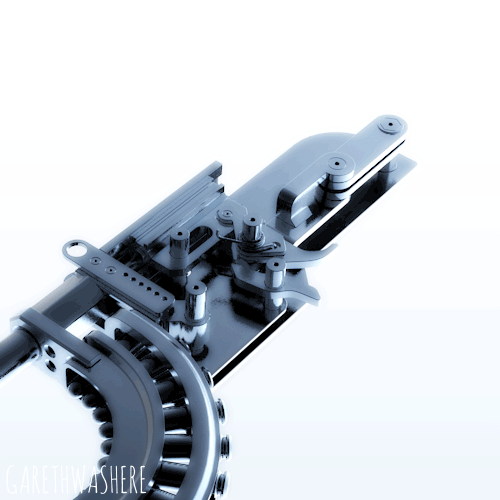
The operation of this weapon is based on automatic recoil (short stroke). As the shot is fired, the powder gases send the barrel back, thereby the reloading mechanism begins to work - it removes the cartridge from the fabric cartridge belt, sends it into the breech and at the same time cocks the bolt. After firing the shot, the operation is repeated again.
15.
Locking the barrel bore by turning the bolt (combat cylinder, clutch). Machine gun "Tupe-92 Heavy Machine Gun" 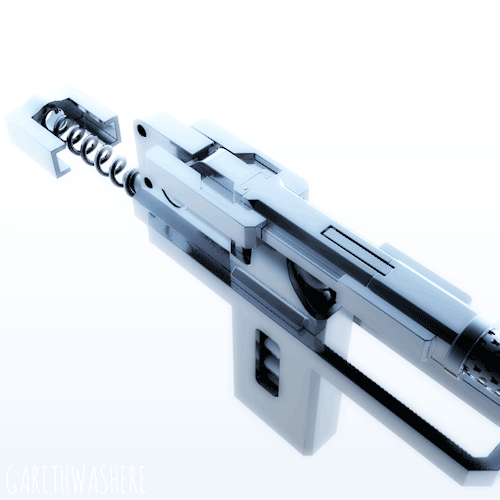
The Type 92 is a Japanese aircraft machine gun from the 1930s. Licensed copy of the British Lewis machine gun. It was widely used on Japanese naval aviation aircraft in the 1930s, but by the beginning of World War II it became obsolete and was replaced by more powerful models. The barrel bore is locked by turning the bolt, the lugs of which fit into the transverse grooves of the receiver. The rotation of the bolt when locking is carried out by a curved groove on the bolt and the base of the bolt frame post.
16.
Locking the barrel bore by tilting the bolt. Rifle StG 44 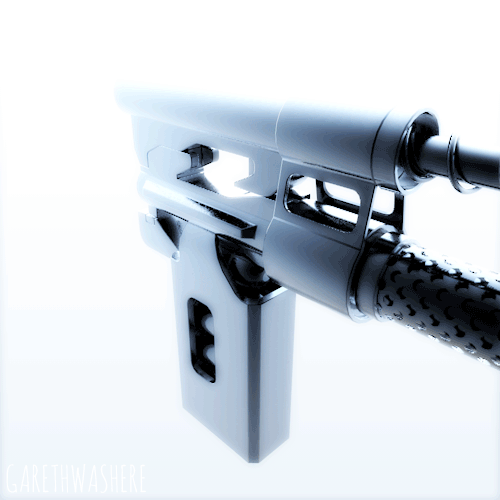
Sturmgewehr 44 - assault rifle from 1944. When locked at an angle, the bolt frame at the extreme front point moves the entire body of the bolt in the longitudinal plane (while when locked by rotating the bolt, it moves in the transverse plane), while the rear end of the bolt extends beyond the reference plane of the receiver. After locking, the shutter mirror takes a position perpendicular to the bore and, accordingly, to the bottom of the sleeve.
17.
Locking with a swinging cylinder (lever). Machine gun "Browning M2" 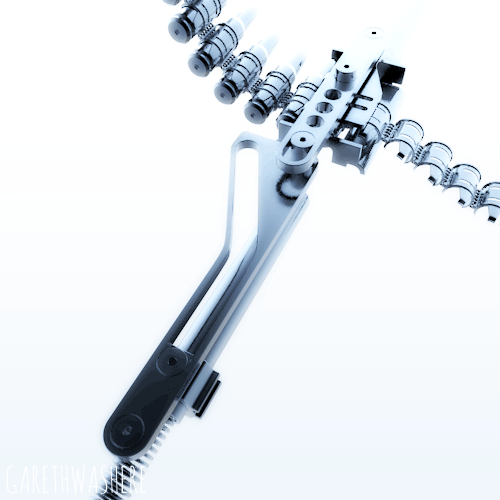
When locked with a swinging cylinder (lever), the bolt is secured at the breech end of the barrel using an intermediate part that moves in a plane perpendicular to the axis of the barrel. When using automatics based on the recoil of the barrel, locking is carried out by the supporting surfaces on the barrel or on the bolt. After the shot, the movable barrel travels some way in a locked state, after which the larva meets the ledge of the receiver (gun frame), moves in a plane perpendicular to the axis of the barrel, unlocking it and allowing the bolt to move away.
18.
Berthier system carbine model 1890 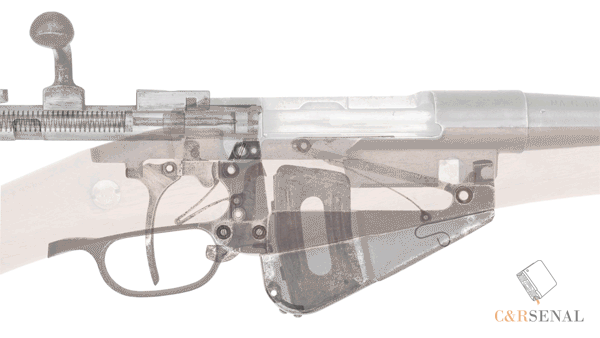
The Berthier carbine has a barrel length of 450 mm. The caliber is 8 mm, the same cartridge as for the 1886 model infantry rifle. The sight is framed, on a stepped block, has divisions up to 1000 m. The length of the sighting line is 363 mm with the sight down and only 310 mm with the sight up. Carabiner length 945 mm. Weight 3000 g.
19.
Pistol "F. L. Selbstlader" 
Pistol "F. L. Selbstlader" was a completely ordinary 7.65 mm blowback weapon. Its only curious feature was the shutter, which was made as a separate unit from the casing. The barrel was threaded to the frame, and the return spring was placed in the upper part of the casing, held above the breech by a fixed clamp. The shutter moved in the grooves of the frame, the cutout in the right side of which formed a rather large window for ejecting cartridges, which is why the shutter did not have sufficient support. The coupling of the bolt to the casing was ensured by a clamp attached to the casing on a hinge and connected to the bolt using protrusions and a large screw at the end of the latter. It was this design feature that served as the basis for registering a patent application for the invention.
20.
FN Browning M.1900 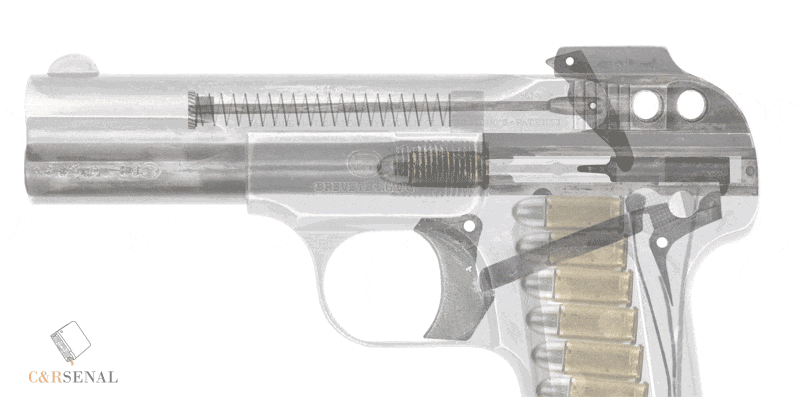
The pistol's automatic operation operates on the principle of blowback. The shutter-casing consists of the shutter itself and the casing, that is, two separate parts that are connected with two screws. The trigger mechanism is striker type. The barrel is rigidly fixed in the frame. The return spring, located above the barrel, is also a combat spring. When the firing pin is not cocked, the lever connecting the spring to the firing pin is raised and blocks the sight line. The magazine with a capacity of 7 rounds is box-shaped, single-row, detachable, located in the handle and held with a latch at the bottom of the handle. The safety lever is located on the left side of the frame. The sights are open and non-adjustable. The cartridge ejection window is madeon the right in the pistol frame, and not in the slide housing, like other Browning designs. Two versions of this pistol were produced, 182 and 164 mm long, but pistols 164 mm long, with a barrel 102 mm long, became widespread. After the release of the first series of 10,000 units (164 mm long), a swivel intended for a safety cord was added to the pistol, on the left side at the bottom of the handle.
21.
Ross Mark III rifle 
Ross system rifles have a longitudinally sliding bolt with a straight handle movement. The barrel is locked by a separate combat cylinder when it is turned. Depending on the modification, the larva could have either two massive combat stops, or stops in the form of intermittent multi-start threads. The rotation of the larva during the longitudinal movement of the shutter was carried out through the interaction of the corresponding spiral grooves and protrusions on the inner surface of the channel in the body of the shutter and on the larva. The cartridges were fed from integral box magazines with a capacity of 5 cartridges, loaded from above with the bolt open. The Ross Mark I and Ross Mark II rifles had Harris system magazines, in which cartridges were placed in a checkerboard pattern in two rows. The magazine was loaded with separate cartridges. To speed up loading, the shooter could first lower the magazine feeder by compressing its spring by pressing a button located on the right side of the fore-end, behind the sight. After this, with the second hand the shooter simply poured five rounds into the magazine box and released the feeder key. On Ross Mark III rifles, the magazine design has changed - it has become single-row, protruding from the bottom of the stock, loaded from ordinary plate clips from Lee-Enfield rifles or one cartridge at a time. All military versions of the Ross rifles also had a magazine cut-off, which, when engaged, turned the rifle into a single-shot rifle. The sights on the Mark I and Mark II rifles are open, with a range-adjustable U-notch rear sight located on the barrel; On Mark III rifles, the rear sight is diopter, located in the rear of the receiver. The front sight on all variants has a ring-shaped front sight. The Ross system was considered one of the best direct action shutter systems of the time. Clear advantages: very strong locking of the piston system, easy running, low noise when loading, high survivability and low weight of the rifle.
22.
.Steyr-Pieper M1909 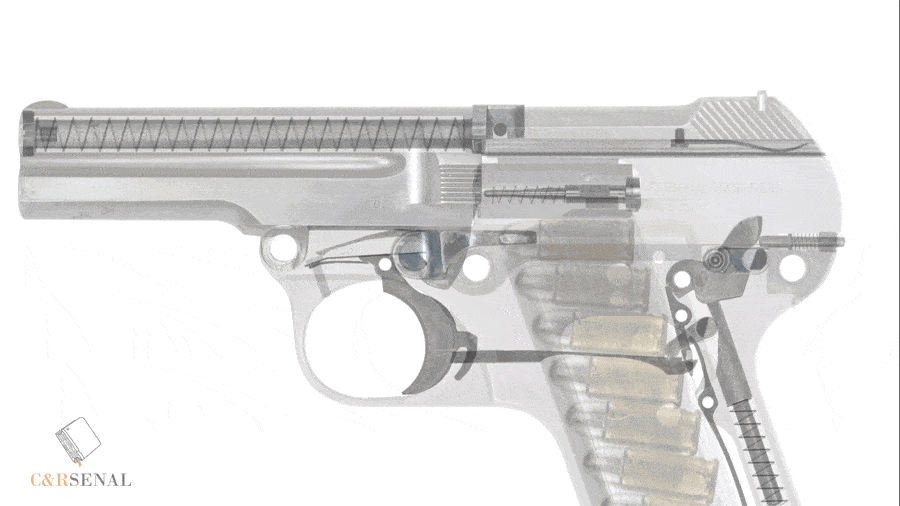
The design of the Steyr-Pieper M1909 is completely similar to that of the Steyr-Pieper M1908. The difference between the pistols is that the 1909 model was chambered for a smaller caliber cartridge - 6.35x15.5 Browning (.25 ACP), and its dimensions were significantly smaller than its “big brother”. The automatic operation of the pistol operates due to the free movement of the bolt. The bolt only reaches halfway down the length of the pistol. The front part of the pistol consists of a block with a return spring at the top and a barrel at the bottom. The return spring is connected to the bolt by a rod with a hook.
23.
Revolver Lebel arr. 1892 
French revolver mod. 1892 is similar in design to the Colt system revolver, but the cylinder is tilted for loading and unloading not to the left, but to the right. The drum is locked by a trigger and a locking device of a slightly different device. A special feature of this revolver is its ease of disassembly. To disassemble, unscrew the connecting screw and turn the left wall; After this, the revolver will be completely open and can easily be disassembled in a manner similar to disassembling a Colt revolver. In addition, the revolver had an “Abadi door” for alternate loading of cartridges.
24.
Ruby pistols 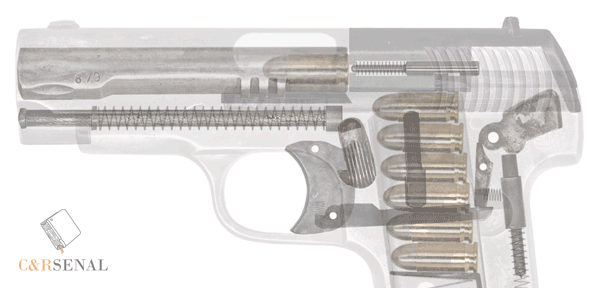
Ruby pistols are self-loading pistols, best known as sidearms of the French Army during World War I, under the name Pistolet Automatique de 7 millim.65 genre "Ruby". Imitating John Browning's pistols, they were produced by more than 50 Spanish firms, but mainly by Gabilondo y Urresti. Pistols like Ruby had intuitive controls, were easy to disassemble and were quickly mastered even by beginners. Its small size and decent magazine capacity made it a popular “backup” weapon for trench warfare, especially for signalmen, orderlies, machine gunners, tank crews, mortarmen and second-line soldiers. Comparatively weakthe cartridge gave a slight recoil, which made it possible to better control the weapon and conduct aimed shooting.
25.
Mauser 1898 rifle 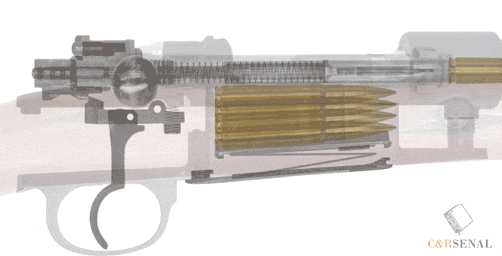
Barrel length 745 mm. 4 grooves, right stroke, pitch 240 mm. The sector sight has a unique design: the clamp runs in the longitudinal grooves of the sighting block, the shield is massive with curved grooves; there is one slot for all distances, divisions for a distance of up to 2000 m. The sight is very durable, but has parts that rise significantly above the barrel, is heavy, requires very precise manufacturing and is therefore expensive to manufacture. The length of the aiming line is 642 mm. Rifle length 1250 mm. Rifle weight 4100 g.
26.
Reichsrevolver M-1879 (Reichsrevolver M1879 and M1883) 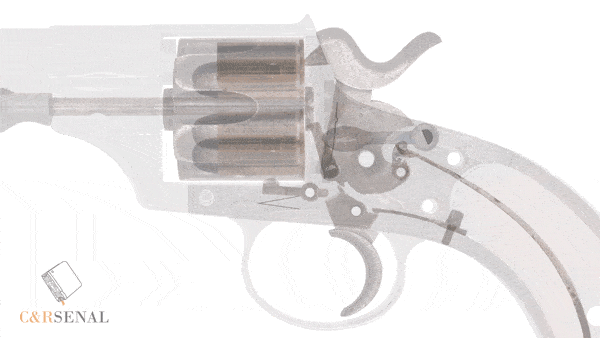
The German Reichsrevolver M-1879 was intended to arm the army. The revolver was in service with the German army from 1880 until 1908, when it was replaced by the Parabellum P08 pistol. During the First World War, the revolver was in service with the rear units of the German army, and was also used at the final stage of the Second World War; it was armed with the Volkssturm militia. The 10.6 mm revolver cartridge was on sale until 1939. The design of the revolver was initially designed to be simple and massive, suitable for mass production. Almost all German arms companies produced Reichsrevolver. The trigger mechanism allows firing only with manual cocking of the hammer. The revolver frame is not detachable. The drum has six chambers; loading and removal of spent cartridges was carried out through a special door behind the drum on the right side of the weapon. There is a lever safety on the left side. The sight is open and consists of a non-adjustable rear sight and front sight. Later, in 1883, a short-barreled version of the revolver appeared, with a 126 mm long barrel. The new version received the official name Reichsrevolver M-1883. Unofficially, they were called “cavalry” and “infantry officer”, respectively.
27.
Walther Modell 4 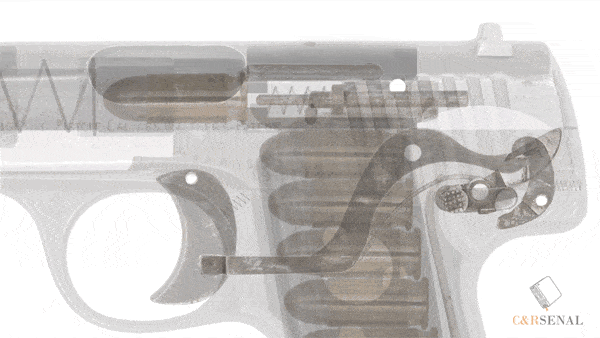
Walther Modell 4 is a self-loading pistol, the operation of which is based on the use of recoil energy from a free bolt. The trigger mechanism is of the hammer type, with the trigger located internally. The ejector and window for removing cartridges are located on the left side of the bolt. To disassemble the weapon, a sleeve is installed in the front part of the bolt, which is fixed with a special lever located on the right, at the bottom of the bolt, or has a bayonet mount. Sights consist of a front sight located on the front bushing and a rear sight on the bolt. Early models had a slot in the top of the bolt instead of a rear sight. The safety lever is located on the left side of the frame at the rear.
28.
Mauser C96 
Military pistols of the Mauser system, which first appeared in 1896, gave a great impetus to the development of automatic weapons. Pistol of the Mauser system mod. 1902 was modernized in 1908 and was adopted into service in Germany, first under the name “Mauser pistol mod. 1902”, and then under the name “Mauser pistol mod. 1908." The modernization increased the power of the pistol and the length of the barrel, and also changed the design of the sight. Mauser pistols mod. 1902-1908 were in service with armies in England, Italy, Czechoslovakia and other countries. The pistol is a type of automatic weapon using recoil of the barrel and bolt with a short barrel stroke. The complete withdrawal of the bolt after disengagement from the barrel is carried out due to the acquired speed of joint movement and mainly due to the residual pressure of the powder gases. The barrel bore is locked using a locking latch (cylinder) that rotates in a vertical plane. Trigger-type impact mechanism with open trigger position. The mainspring is mounted inside the pistol frame and simultaneously performs the functions of a barrel return spring.
29.
Mauser pistol model 1914 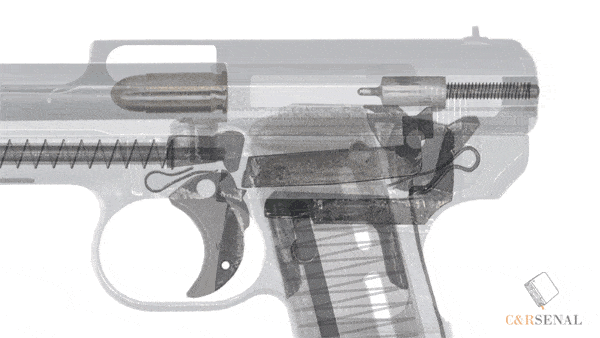
A characteristic feature of the design was the use of the striker as a reflector of the spent cartridge case, and also the fact that the magazine was designed to hold nine rounds instead of the usual six rounds for pocket pistols. The spent cartridges were ejected to the right and upward. Sighting devices consisted of mlugs on the barrel and a permanent sight on the bolt casing. According to the military, a pocket Mauser bullet from seventeen meters pierced five inch pine boards (a Nagan bullet only three), when firing from a distance of twenty meters, the radius of the best half of the hits was 22 centimeters (the Browning 1906 had 26 centimeters). Compared to other models of this type, the Mauser was larger, but its convenience and high reliability made it very popular. One cannot fail to note the peculiar elegance of this weapon. We called it “Mauser number one”, in contrast to “Mauser number two” - that same pistol-carbine.
thirty.
Beholla self-loading pistol and its variants (Beholla, Stenda, Menta, Leonhardt) 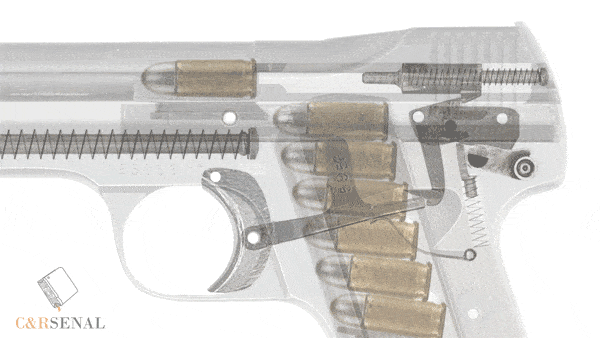
The Beholla pistol was produced between 1915 and 1918 for the German army; in total, about 45,000 pistols were produced. The production was carried out by the company "Becker & Hollander" in Suhl, from whose name the pistol got its name (Becker & Hollander). The company was later renamed Stenda Werke and the pistol was named "Stenda". Other German arms companies also produced this pistol; copies are known under the names Menz, Menta, Leonhardt. The Menta and Menz variants, in addition to the 7.65 mm caliber, were also chambered for 6.35 Browning caliber cartridges, which was not the case with the original Behall and Stand. The design of the Beholla pistol and its variants is simple and reliable, which is exactly what is needed for a military pistol. Automatic reloading works due to the free movement of the casing - bolt. When fired, the bore is supported by a return spring located under the barrel. Striker-type trigger mechanism. The mechanical safety box is located behind the pistol handle, on the left side.
31. 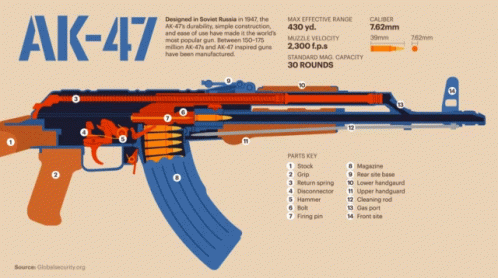
32.





















